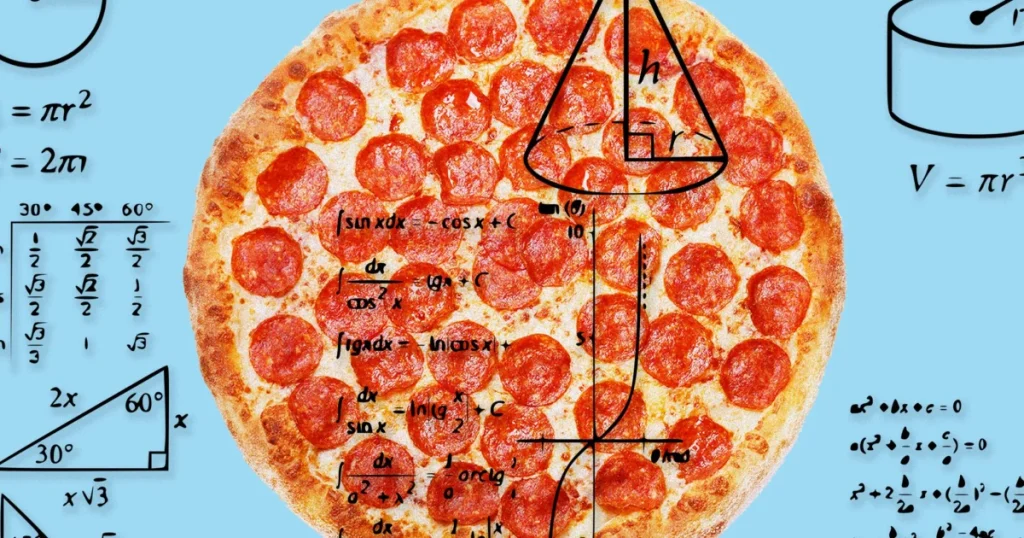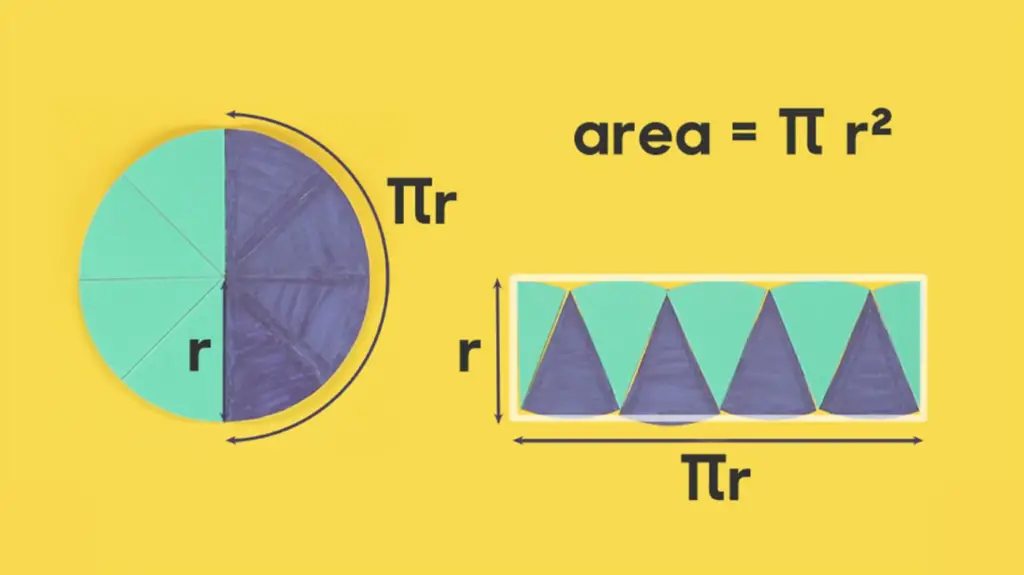🍕 Compare Pizza Size
Are you looking to compare pizza sizes? Our pizza size calculator tells you which size to buy based on the best value for money.
Select comparison in inches (in) or centimeters (cm)
Pizza 1
Pizza 2
Pizza Sizes: A Guide The Most Common Pizza Sizes
Pizza comes in a variety of sizes, ranging from personal-sized to extra-large. Here’s a breakdown of each pizza size, along with some comparisons to help you visualize the size.
Note that the following are American (USA) sizes in inches.
| Pizza Size | Diameter (inches) | Servings | Weight (oz) | Weight (grams) | Weight Comparison | Nutritional Information (per slice) |
|---|---|---|---|---|---|---|
| Small | 10-12 | 1 | 8-12 | 227-340 | About the weight of a medium-sized apple or a small grapefruit | Calories: 150-200, Fat: 5-8g, Carbs: 20-30g, Protein: 6-8g |
| Medium | 12-14 | 2-3 | 12-16 | 340-454 | About the weight of a large apple or a medium-sized cantaloupe | Calories: 200-250, Fat: 8-10g, Carbs: 25-35g, Protein: 8-10g |
| Large | 14-16 | 2-4 | 16-20 | 454-567 | About the weight of a large grapefruit or a head of cauliflower | Calories: 250-300, Fat: 10-12g, Carbs: 30-40g, Protein: 10-12g |
| Extra Large | 16-18 | 4-6 | 20-24 | 567-680 | About the weight of a large pineapple or a large butternut squash | Calories: 300-350, Fat: 12-14g, Carbs: 35-45g, Protein: 12-14g |
If you’re trying to make healthier choices, consider ordering a smaller size or sharing a larger pizza with friends.
How to Choose and Compare the Perfect Pizza Size
There’s no doubt pizza is one of the most popular and delicious foods all over the world. The different sizes and toppings. Think of thin crusts or Chicago deep dish pizza style. Such food can feed a crowd or a craving for a single slice. At comparepizzasizes.com we compare pizza sizes and explore the factors that can affect their:
- architecture
- price
- value
All that can help you decide the perfect pizza size for your needs based on price value.
Choosing the Right Pizza Oven: Wood-Fired versus Product Ovens
When it comes to cooking (or baking) pizza, the oven plays a crucial role in achieving perfect results such as crust, texture, and flavor. While there are various types of pizza ovens available in the market, two of the most popular options are wood-fired and product ovens. In this section, we will compare the features and benefits of these two types of ovens.
Wood-Fired Pizza Ovens

Wood-fired pizza ovens are traditional ovens that use wood as a fuel source to heat the oven and cook the pizza. The advantages of wooden ovens are:
- Crispy results
- Chewy crust
- Smoky rich flavor
- Efficiency
- Higher temperatures
Wood-fired ovens can also reach temperatures of more than 700°F (370°C), which allows for fast and efficient cooking.
The disadvantage of using wood-fired pizza ovens is the need for more space. Installation can be challenging if have limited outdoor space. They also need a constant supply of wood, which can be expensive and difficult to source in some areas. Additionally, you’ll need to maintain regular cleaning to prevent the build-up of ash and soot.
Product Ovens

Product ovens are conventional electric or gas-powered. These ovens come in various sizes and shapes, and some models even have multiple cooking chambers that allow you to cook several pizzas at once. Product ovens are relatively easy to install and maintain, and they don’t require a steady supply of wood or other fuels to operate.
The main advantage of product ovens is their convenience and ease of use. They are ideal for home cooks who want to make pizza without the hassle of using a traditional wood-fired oven. Product ovens also offer more control over the cooking process, as you can adjust the temperature and cooking time to achieve your desired crust and texture. However, some people may find that the pizza cooked in a product oven lacks the smoky and rich flavor that comes with using a wood-fired oven.
Conclusion: When it comes to choosing the right pizza oven, it ultimately depends on your preferences and cooking needs. Wood-fired ovens are ideal for those who want to achieve that authentic, rustic flavor and texture of a traditional pizza, while product ovens offer convenience and ease of use. Consider the size, price, maintenance, and fuel source when making your decision.
The Math of Pizza Size: A Comparison of Area and Price
When it comes to ordering pizza, size matters. However, it’s not just about how many slices you’ll get, but also the actual area of the pizza and how it relates to the price you pay. In this section, we’ll take a closer look at the math behind pizza size and compare the area and price of different pizza sizes.
Pizza Size and Area
Pizza size is typically measured in diameter, but the area of the pizza is what matters when it comes to how much pizza you’re getting for your money. The area of a pizza can be calculated using the formula A = πr², where A is the area, π is the mathematical constant pi (approximately 3.14), and r is the radius of the pizza.
For example, let’s compare a 10-inch pizza to a 14-inch pizza. The radius of the 10-inch pizza is 5 inches, so its area is approximately 78.5 square inches. The radius of the 14-inch pizza is 7 inches, so its area is approximately 153.9 square inches. This means that the 14-inch pizza has almost twice the area of the 10-inch pizza.
Pizza Size and Price
When it comes to price, the area of the pizza is also important to consider. Most pizzerias charge by the size of the pizza, but the price per square inch can vary greatly depending on the pizzeria and the toppings you choose. For example, a 10-inch cheese pizza may cost $8, which works out to approximately 10 cents per square inch. However, a 14-inch cheese pizza may cost $14, which works out to approximately 9 cents per square inch.
When you compare the price per square inch of different pizza sizes, you may find that a larger pizza is more cost-effective than a smaller one. Of course, this also depends on your appetite and how many people you’re feeding.
Conclusion: When ordering pizza, it’s important to consider both the size and area of the pizza, as well as the price per square inch. While a larger pizza may seem more expensive at first glance, it may be a better value when you factor in the area and price. Of course, the most important factor is still the taste and quality of the pizza itself, so don’t forget to choose a pizzeria that makes a great pizza regardless of its size.
Area Matters: The Relationship between Pizza Size, Area, and Price

In the previous section, we explored the math behind pizza size and how it relates to the area of the pizza. Now, let’s take a closer look at the concept of area and its relationship to pizza size and price.
Area Multiplied by Price
As we discussed earlier, the area of a pizza can be calculated using the formula A = πr², where A is the area, π is the mathematical constant pi (approximately 3.14), and r is the radius of the pizza. However, when it comes to ordering pizza, we don’t typically think in terms of radius or area. We usually order by the diameter of the pizza and the price we’re willing to pay.
To find the area of a pizza based on its diameter, we can use the formula A = π(d/2)², where A is the area, π is pi, and d is the diameter of the pizza. Once we know the size of the pizza, we can then determine the price per square inch by dividing the price of the pizza by its area
For example, let’s say a 12-inch pizza costs $12. Using the formula above, we can calculate that the area of the pizza is approximately 113.1 square inches. This means that the price per square inch of the pizza is approximately 10.6 cents. If we were to compare this to a 16-inch pizza that costs $16, the area of the pizza would be approximately 201.1 square inches, making the price per square inch approximately 7.9 cents.
Size Matters
When it comes to ordering pizza, the size of the pizza matters. However, it’s not just about how many slices you’ll get, but also the actual area of the pizza and how it relates to the price you pay. By understanding the relationship between pizza size, area, and price, you can make a more informed decision about which pizza to order based on your budget and appetite.
Conclusion: When it comes to pizza, size isn’t the only thing that matters. The area of the pizza is also an important factor to consider when determining the price per square inch. By using the formulas and concepts we’ve discussed in this section, you can better understand the relationship between pizza size, area, and price, and make a more informed decision the next time you order a pizza.
What You Need to Know When Comparing Pizza Sizes
When it comes to pizza, size matters. But how do you compare the sizes of different pizzas, and how do you choose the right size for your needs? In this section, we’ll explore the various tools and methods for comparing pizza sizes, including diameter and area.
Diameter
One of the most common ways to compare pizza sizes is by using diameter. This measurement refers to the length of a straight line passing through the center of the pizza and connecting two points on the opposite side of the pizza. Diameter is typically measured in inches, and it’s often the measurement used by pizzerias to advertise their pizzas.
When comparing pizzas based on diameter, it’s important to remember that the area of the pizza will also vary based on the diameter. For example, a 12-inch pizza has a diameter that is 33.3% smaller than a 16-inch pizza, but its area is 44.4% smaller.
Area

Another way to compare pizza sizes is by using the area. As we discussed earlier, the area of a pizza can be calculated using the formula A = πr² or A = π(d/2)², where A is the area, π is pi, r is the radius of the pizza, and d is the diameter of the pizza. By comparing the area of different pizzas, you can get a more accurate sense of the actual size of the pizza.
When comparing pizzas based on area, it’s important to consider the price of the pizza as well. A larger pizza may have a higher area and offer more slices, but it may also be more expensive. By comparing the price per square inch of different pizzas, you can determine which pizza offers the best value for your money.
Conclusion: Comparing pizza sizes can be tricky, but by using the right tools and methods, you can make an informed decision about which pizza to order. Whether you’re comparing pizzas based on diameter or area, it’s important to consider the price per square inch to get the best value for your money. So the next time you’re ordering pizza, take a closer look at the size of the pizza and use the methods we’ve discussed to compare your options and choose the perfect pie for your needs.
That’s enough math and calculation for today. If you made it here, it’s time for a pizza. So go ahead, either order in or go out and enjoy your favorite pizza.